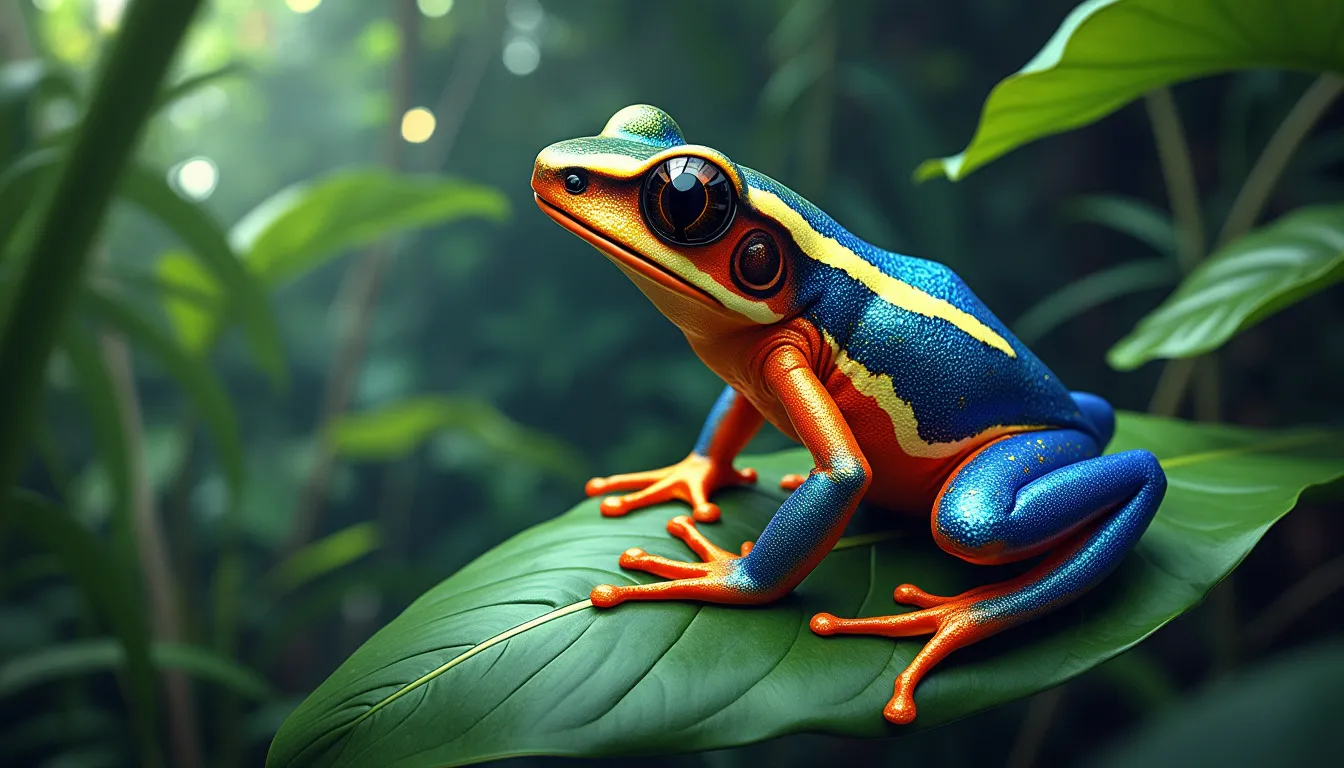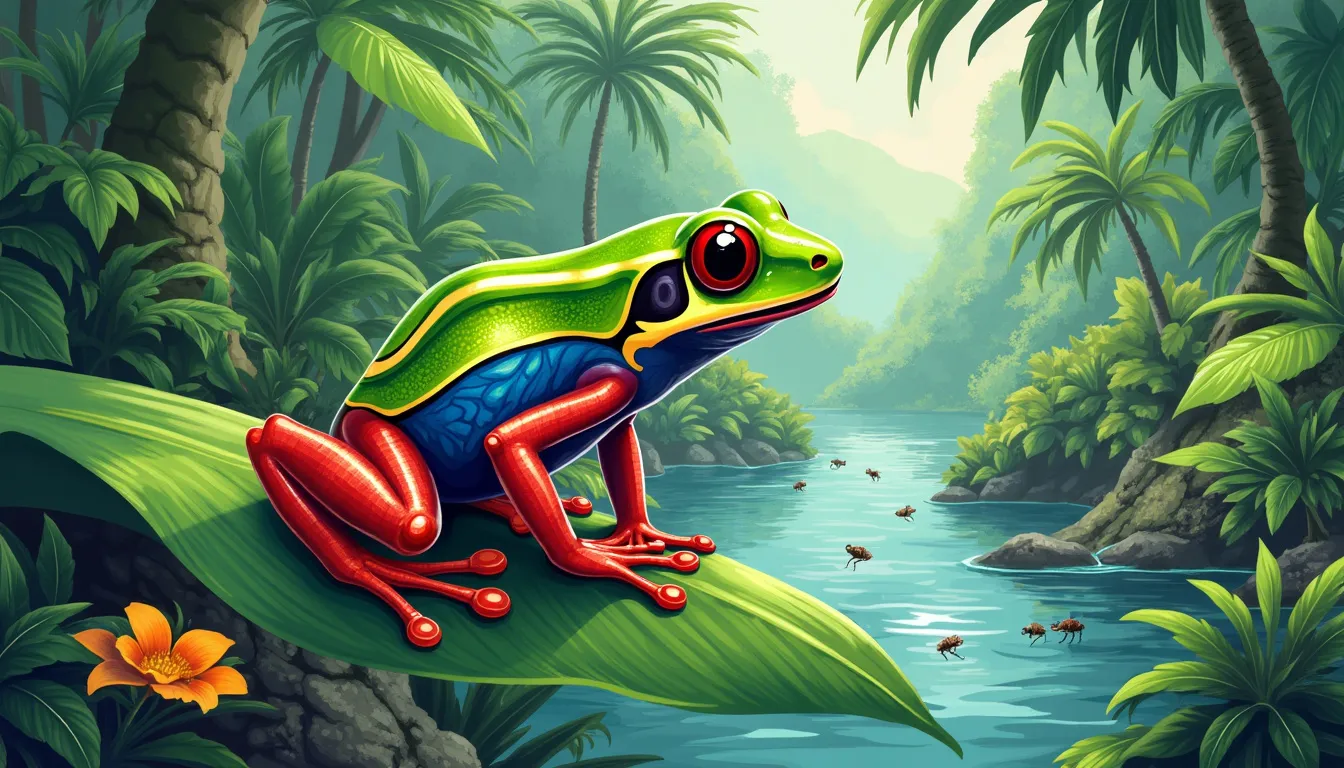
Exploring the Santa Isabel Dart Frog: A Colorful Amphibian of Nature
The Santa Isabel dart frog is a stunning amphibian that captures the imagination with its vibrant colors and unique characteristics. This remarkable species is not just a pretty face; it plays a vital role in the ecosystems where it resides. Found primarily in the lush rainforests of Central and South America, the Santa Isabel dart frog showcases dazzling hues that can range from bright yellows to deep blues. These colors are not only a feast for the eyes but also serve as a warning to predators about their toxicity.
Understanding the Santa Isabel dart frog helps us appreciate the importance of biodiversity and the delicate balance of nature. As we dive deeper into exploring this colorful amphibian, we will uncover its habitat, behavior, and the ongoing efforts to conserve this fascinating species. Join us in embarking on this journey to learn more about the Santa Isabel dart frog and why it deserves our protection.
I. Introduction to the Santa Isabel Dart Frog
The Santa Isabel dart frog is more than just a pretty face. This amazing amphibian is known for its vibrant and distinctive colors. With bright yellows, blues, and greens, the Santa Isabel dart frog captures the attention of many nature lovers and scientists alike. These colors are not just for show; they play a vital role in its survival. Understanding the Santa Isabel dart frog helps us appreciate the incredible world of biodiversity and how it contributes to our ecosystems.
A. Overview of the species and its distinctive colors
The Santa Isabel dart frog, also known scientifically as Oophaga pumilio, is a small but striking frog species found primarily in the tropical forests of Panama. Here are some key facts about its distinctiveness:
- Color Variations: The Santa Isabel dart frog showcases a range of stunning colors. Depending on their habitat, they can be bright red, electric blue, or sunny yellow. This diversity helps them in many ways.
- Pattern Recognition: Each frog has unique patterns and colors. This variation assists in mate selection and communication.
- Toxicity: Their bright colors signal to predators that they are toxic. This is called aposematism. It discourages predators from eating them, contributing to their long-term survival.
These frogs have a fascinating connection to their environment, acting as bioindicators. This means that their health reflects the overall health of their habitat.
B. Importance of the Santa Isabel dart frog in biodiversity and ecosystems
The Santa Isabel dart frog plays a crucial role in its ecosystem. Here are a few reasons why they are important:
| Role | Description |
|---|---|
| Prey Species | They serve as food for birds, reptiles, and other predators, contributing to the food chain. |
| Pest Control | Their diet mainly consists of small insects, helping control pest populations. |
| Indicator Species | They indicate the health of their habitat. If the Santa Isabel dart frog starts declining, it may signal environmental problems. |
By studying the Santa Isabel dart frog, scientists can learn more about the health of tropical ecosystems. This knowledge is crucial as many regions are facing environmental threats. Consequently, conserving the Santa Isabel dart frog and its habitat can help protect other species and the overall biodiversity of the area.
To learn more about amphibians and their role in ecosystems, visit Amphibian Ark. They provide valuable information on conservation efforts that benefit species like the Santa Isabel dart frog.
In summary, the Santa Isabel dart frog is not just a beautiful amphibian; it’s vibrant colors and role in the ecosystem underline its significance in biodiversity. Understanding and protecting this unique frog can increase awareness and action to conserve our precious natural environments.

Habitat, Behavior, and Conservation of the Santa Isabel Dart Frog
A. Description of the Natural Habitat and Geographic Distribution
The Santa Isabel dart frog (Phyllobates lugubris) thrives in unique environments. Here’s where you can typically find them:
1. Location: This colorful amphibian is mainly found on Santa Isabel Island in Ecuador. They prefer wet and humid areas, which provide the right conditions for their survival.
2. Natural Habitat:
– Rainforests: The Santa Isabel dart frog is commonly spotted in tropical rainforests. The dense canopy above helps keep the environment moist.
– Lowland Areas: They often inhabit lower elevations with higher humidity.
– Streams and Puddles: These frogs are often seen near freshwater sources, as they need them for breeding.
3. Climate:
– These frogs thrive in warm temperatures, which usually range between 20°C to 30°C (68°F to 86°F).
– The average rainfall can be upwards of 3000 mm (118 inches) per year, making it an ideal habitat for moisture-loving species.
The Santa Isabel dart frog’s specific habitat needs make them vulnerable to environmental changes, which can lead to a decline in their population.
B. Key Behavioral Traits, Diet, and Breeding Habits
Understanding the behavior of the Santa Isabel dart frog is crucial to appreciate their role in the ecosystem. Here are some key aspects:
1. Behavioral Traits:
– Activity Level: The Santa Isabel dart frog is primarily diurnal, meaning they are active during the day. They can often be found basking on leaves or in the sun.
– Territoriality: Males are known to be territorial and may engage in vocal displays to ward off rivals. Their calls can be heard throughout their habitat.
2. Diet:
– The Santa Isabel dart frog is an insectivore. Their diet mainly consists of:
– Ants
– Termites
– Small beetles
– They have a unique way of capturing prey, using their long tongues to grab insects quickly.
3. Breeding Habits:
– Reproductive Strategy: During the rainy season, males call to attract females. When a female chooses a mate, they engage in elaborate mating displays.
– Egg Laying: Females lay eggs in moist areas, usually on leaves above water.
– Tadpoles: Once the eggs hatch, the tadpoles drop into the water below, where they will grow into frogs, continuing the life cycle.
This breeding strategy helps increase their chances of survival. The use of moist environments for laying eggs is critical since it protects the tadpoles from predators.
C. Conservation Status and Efforts to Protect the Santa Isabel Dart Frog from Threats
The Santa Isabel dart frog is not only a vibrant part of nature but also faces significant threats. Understanding their conservation status is essential:
1. Conservation Status:
– According to the International Union for Conservation of Nature (IUCN), the Santa Isabel dart frog is classified as endangered. The primary factors contributing to this status include habitat loss and climate change.
2. Threats:
– Deforestation: The clearing of rainforests for agriculture and urban development poses a severe risk to their habitat.
– Pollution: Pesticides and chemical runoff can contaminate their food sources, which is harmful to their health.
– Climate Change: Altered weather patterns can lead to more extreme conditions, upsetting their habitat’s balance.
3. Conservation Efforts:
– Protected Areas: There are ongoing efforts to create and maintain protected areas on Santa Isabel Island. These protected lands help ensure the survival of the Santa Isabel dart frog.
– Research Initiatives: Scientists are studying their population and habitat requirements to make informed conservation decisions.
– Community Involvement: Educating local communities about the significance of the Santa Isabel dart frog has gained momentum. When people are aware, they are more likely to participate in conservation efforts.
4. How You Can Help:
– Support Wildlife Organizations: Donating to groups that work toward frog conservation can have a direct impact.
– Raise Awareness: Share information about the importance of the Santa Isabel dart frog and the threats they face.
– Sustainable Practices: Encourage sustainable farming and development to minimize habitat destruction.
To learn more about amphibian conservation, consider visiting Amphibian Survival Alliance, which provides resources and information about various frogs’ conservation efforts worldwide.
The Santa Isabel dart frog is a testament to the beauty and diversity of amphibians, but it also highlights the urgent need for conservation efforts to protect these unique creatures and their habitats.
Conclusion
The Santa Isabel dart frog is not just a vibrant and colorful amphibian; it plays a vital role in the ecosystems it inhabits. With its stunning appearance and intriguing behavior, this species captivates the interest of both researchers and nature enthusiasts alike. Its unique habitat, primarily found in the lush rainforests, showcases the importance of preserving biodiversity. However, the Santa Isabel dart frog faces numerous threats, including habitat loss and climate change, which have led to a decline in its population.
Conservation efforts are essential to ensure the survival of this species and the ecosystems they help maintain. By spreading awareness and supporting preservation initiatives, we can contribute to the protection of the Santa Isabel dart frog and its environment. Protecting this remarkable amphibian is not just about saving a species; it’s about maintaining the balance of nature and safeguarding the rich tapestry of life on our planet. As we continue to learn and explore, the colorful Santa Isabel dart frog reminds us of the beauty and fragility of our natural world.
